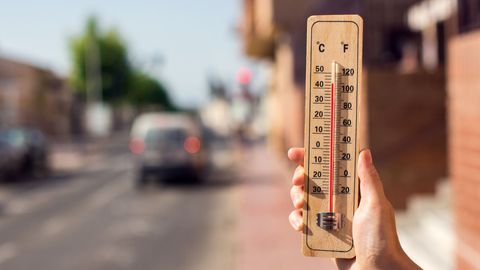The India Meteorological Department (IMD) has issued a red alert for Delhi and neighboring states, warning of extreme heat through May 23. Temperatures soared past 47°C in parts of the National Capital Region (NCR) on Sunday.
Dr. Satish Koul, Senior Director & Unit Head of Internal Medicine at Fortis Memorial Research Institute in Gurgaon, emphasizes the importance of taking preventive measures to protect against heat-related illnesses. “As the mercury rises to unbearable levels, the threat of heat-related illnesses is also on the rise. The answer lies in prevention and ensuring that you keep yourself protected against high temperatures,” he said.
Understanding Heat Stroke
Heat stroke is a severe condition that can occur when the body temperature rises above 105°F (40.6°C) and loses its ability to regulate heat. This is different from a fever, which is the body’s response to infection. Heat stroke often develops from milder heat-related illnesses like heat cramps and heat exhaustion but can also happen suddenly without prior symptoms. In extreme cases, heat stroke can cause brain damage or even death.
Symptoms of Heat Stroke
- Nausea
- Seizures
- Throbbing headache
- Fainting
- Rapid heartbeat
- Dry skin (no sweating despite the heat)
Immediate Actions for Heat Stroke
If someone shows signs of heat stroke, immediate steps should be taken to cool their body:
- Move the person to a cooler place
- Apply cool water or an ice bath
- Use fans or air conditioning to lower body temperature
Preventive Measures
- Stay Hydrated: Always carry water and keep your fluid intake high.
- Wear Loose-Fitting Clothes: Loose clothing allows your body to cool more efficiently.
- Avoid Peak Heat Hours: Schedule outdoor activities for the mornings or evenings. Avoid the noon hours when the sun is at its hottest.
- Never Leave Children in Parked Cars: A car can quickly heat up to dangerous levels.
Additional Tips for Vulnerable Groups
Dr. Ajay Agarwal, Director at Fortis Hospital in Noida, notes a significant increase in heat-related illnesses. “With the increasing temperatures, we’ve seen a 20-30% rise in patients suffering from heat exhaustion,” he explained. Symptoms include muscle cramps, abdominal pain, generalized weakness, nausea, vomiting, and diarrhea.
Risk Factors for Heat Exhaustion
- Poor physical fitness
- Obesity
- Dehydration
- Acute illness
- Lack of acclimatization
- Strenuous exercise in high temperatures
Symptoms of Heat Exhaustion
- Palpitations
- Extreme weakness
- Loss of consciousness
- Headache
- Abdominal cramps
- Nausea and vomiting
- Diarrhea
- Persistent muscle cramps
Precautions to Take
- Drink 2-3 liters of water daily
- Wear a cap or head scarf when outdoors
- Choose cotton clothing
- Cool down gradually when returning from the outdoors, using a fan before taking a bath
Elderly people and children should particularly avoid direct sun exposure to prevent dehydration and heat stroke.
Staying informed and taking these preventive measures can significantly reduce the risk of heat-related illnesses during the ongoing heatwave.




